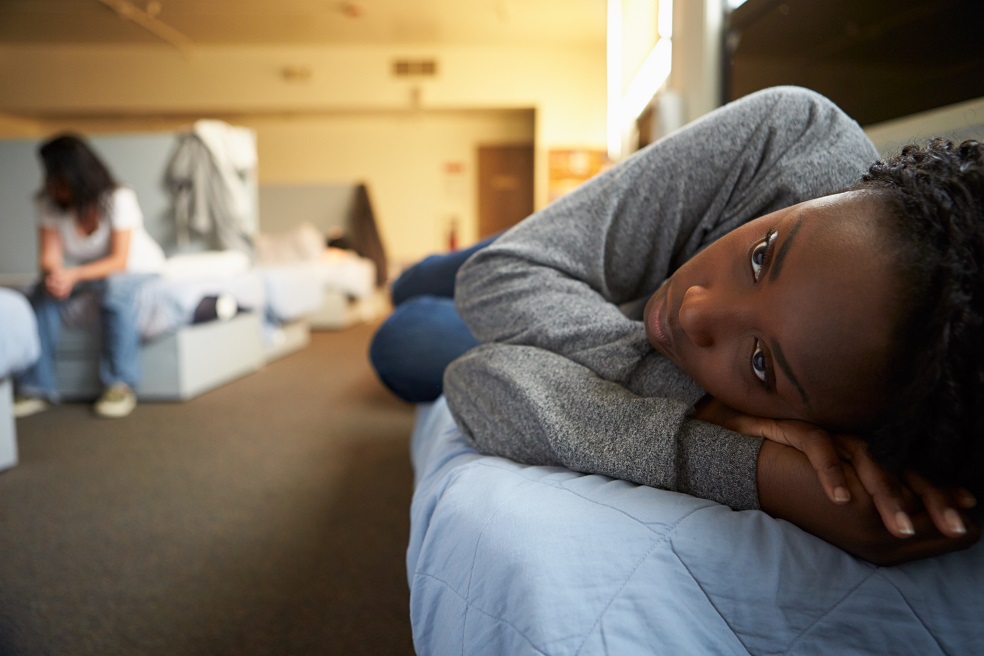Homelessness statistics reflect pandemic safety measures as B&B use doubles
Scottish councils doubled their use of bed and breakfast accommodation for people experiencing homelessness during the first few months of lockdown last year as part of the measures taken to protect people during the coronavirus pandemic, new official statistics have revealed.

Reflecting the move to ensure everyone who needed it could access self-contained accommodation to self-isolate, 14,151 households were in temporary accommodation as of the end of September 2020 - a 24% rise on the same period last year including a 99% rise of B&B use from 710 households in 2019 to 1,414 last year.
The findings for the period April 1 to September 30 were taken from at a time when the courts were closed, and an effective eviction ban meant that fewer people than normal lost their home than in previous years. The numbers also reflect efforts early in lockdown to lift people off the streets and off sofas and into hotel accommodation.
In total 13,650 households lost their homes between April and September of last year despite the eviction ban being in place during that time. There were also 7,900 children in temporary accommodation at the end of September, a new record high.
In the period between April and September 2020, there were 16,997 homelessness applications, a 10% decrease on the same period last year. A total of 13,645 were assessed and accepted as homeless, a 14% decline from last year.
Drivers of homelessness during April to September 2020 reflected increasing household pressure with 27% of applicants having been asked to leave accommodation (up from 24% the previous year), a further 23% had to leave because of a dispute and/or relationship breakdown (increasing from 18% last year). There was a notable decrease in households becoming homeless from a private rented tenancy as 10% of households assessed as homeless in this period gave this as their previous accommodation type, compared with 17% in the same period in 2019.
There was also a 4% rise in the number of households where one applicant (859 or 5% of applications) had slept rough the night before making an application during April - September 2020.
The findings also show:
- there were 16,568 assessments made, with 13,645 (82%) of applicants being assessed as homeless or threatened with homelessness. This was a decrease of 14% (2,215) compared with the same period in 2019
- while the number of applications fell, there was also a reduction in the number of cases closed. As a result the number of open homelessness cases at 30 September 2020 reached 27,332, a 20% increase on the figure from 30 September 2019
- there was an increase in the proportion of households becoming homeless from the family home (30% compared with 24%) and from living with friends or partners (22% compared with 18%)
- compared with 2019, there were a higher proportion of applicants who were single males (50% compared with 44%), 18-24 years old (22% compared with 20%) and of White Scottish ethnicity (78% compared with 75%)
- 9,920 cases assessed as homeless or threatened with homelessness were closed in the period April to September 2020 – a fall of 30% compared with 2019.
Housing minister Kevin Stewart said: “Since the start of lockdown our priority has been to keep people safe from COVID-19 – and housing people without a settled home in temporary accommodation was a public health imperative to keep people safe. Temporary accommodation can offer an important safety net, but it should be a short-term measure – we do not want to see anyone in temporary accommodation for longer than is absolutely necessary. We are now providing £30 million to local authorities and working hard to move people into a settled home.
“This is the first set of official homelessness statistics for which coronavirus restrictions were in place for the full reporting period, and the trends can largely be explained by the Scottish Government’s range of actions to keep people safe in the pandemic, such as the introduction of stay at home guidance and our extension of eviction notice periods.
“We remain committed to ending rough sleeping and homelessness and our action plan lays out how we will get there. The provision of homes is an important part of that and I am proud we have led the way on affordable housing, having delivered almost 100,000 since 2007, more than 68,000 of which were for social rent. Our Housing to 2040 strategy, launched this month, has set a target of delivering another 100,000 by 2032, and we are investing £3.5 billion in housing over the next five years to help support this work.”
Lorraine McGrath, Simon Community Scotland CEO, said: “These figures cover what was an extraordinary period in our lifetime and illustrate how Scotland responded to homelessness during this crisis. They reflect a remarkable mobilisation of support and action.
“A year ago today we were faced with a sense of urgency and risk never seen before. The whole country went into lockdown amidst a pandemic that presented significant risk to the lives of vulnerable people particularly those experiencing rough sleeping and homelessness.
“Within 72 hours the Scottish Government had agreed funding and a range of measures to ensure there were safe places for everyone. Critically also introducing a ban on evictions. This fuelled remarkable efforts on the ground across all agencies, to ensure everyone had their own safe space, faster access to healthcare, treatment and long-term solutions. Our local authority, health and charity partners were outstanding and within days we had supported all but a handful of folks into a welcoming safe place.
“Today rough sleeping remains at that all time low, the joined-up working and determination that overcame those early barriers remain, with similarly connected work now tackling the increased numbers in temporary accommodation, built up as the housing system slowed to a stop.
“The numbers here represent people’s lives and futures. Having seen what can be achieved, we need to sustain that same sense of urgency in how we implement the objectives set out in Ending Homelessness Together, so that everyone has a safe place to live.”
Jon Sparkes, chief executive of Crisis, said: “At the start of the pandemic our priority was supporting people off the streets and ensuring they had safe, self-contained accommodation. There is no doubt that extraordinary action by national and local government, as well as homelessness services, saved lives from both coronavirus and the cold, but these interventions are short-term solutions.
“We’ve seen huge progress in ending rough sleeping in Scotland. This has led to record numbers of people living in temporary accommodation, with many people being left without access to proper laundry or cooking facilities. We now need to see action to ensure these people are supported quickly into safe and settled homes.
“We’ve also seen a rise in the number of people becoming homeless after being asked to leave home, or following household disputes. It is vital that anyone at risk of losing their home can access support and advice early, to help them avoid losing their homes and having to make decisions at a point of crisis.
“The best way to end homelessness is to prevent it happening in the first place. That’s why we are calling on all parties to make preventing and ending homelessness a national priority ahead of the election.”
Alison Watson, director of Shelter Scotland, said the statistics expose a massive shortage of suitable homes.
She said: “Thousands of people have endured lockdown in homeless accommodation because our country is in the grip of a scandalous housing emergency caused by the lack of safe, secure and affordable social homes.
“To see a near doubling of the use of bed and breakfast exposes just how grossly under-resourced councils were before the pandemic triggered more funding to make use of available tourist accommodation. These protections should always have been there. It’s the law, it was the law and it remains the law.”
Ms Watson added: “We can see that when the political will is there, homelessness can be resourced in a way which takes people off the streets and keeps others in their homes.
“This has to be just the start. The temporary protections for tenants need to be made permanent to prevent a future wave of homelessness.
“But more than anything else we need to get real about our commitment to reducing the numbers of people living without the safe, secure and affordable homes they need. Independent researchers have told us that means 37,100 new social homes in the next five years. We won’t rest until there’s a home for everyone.”








